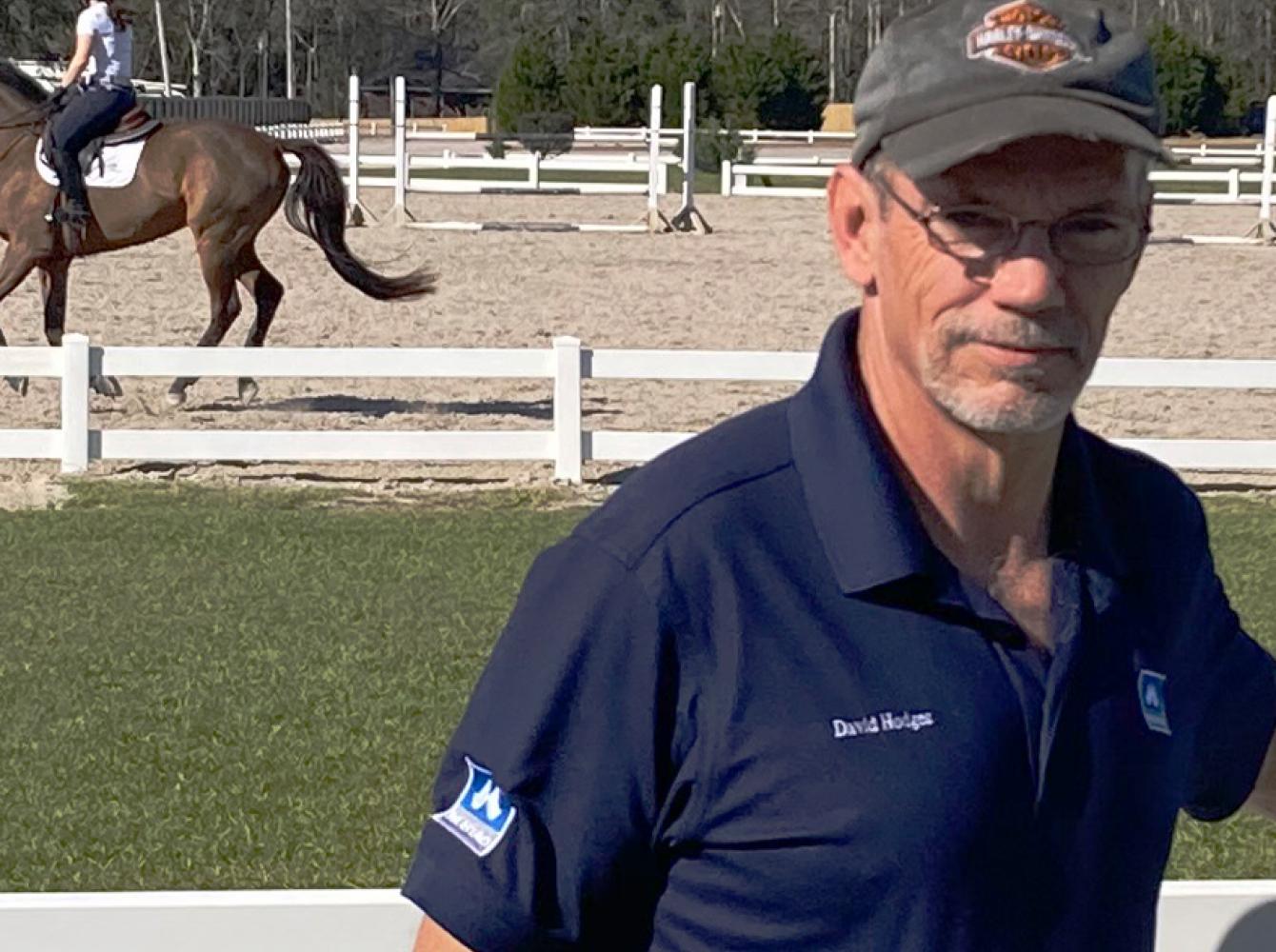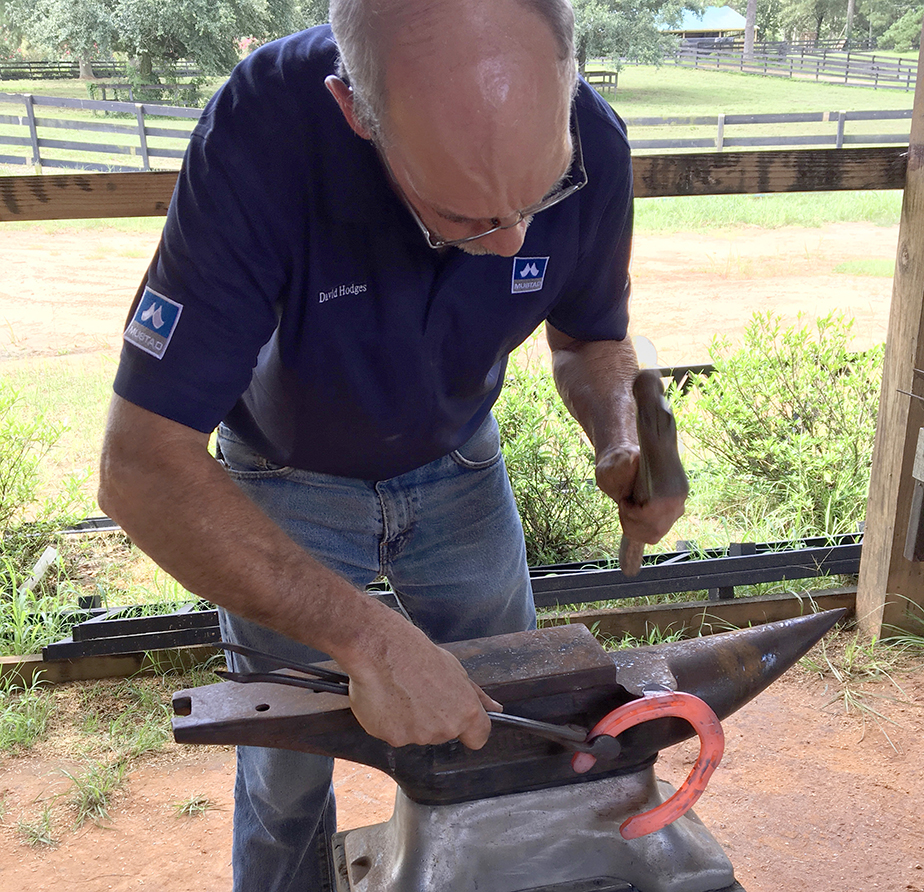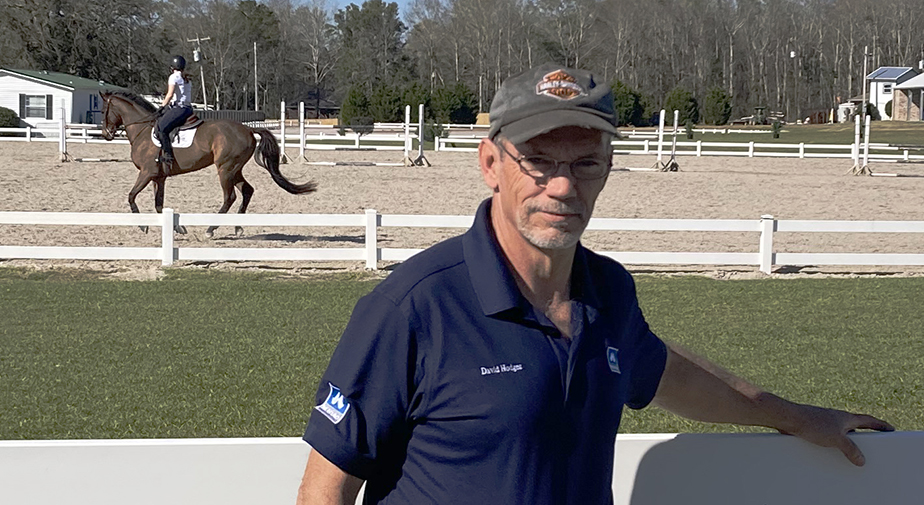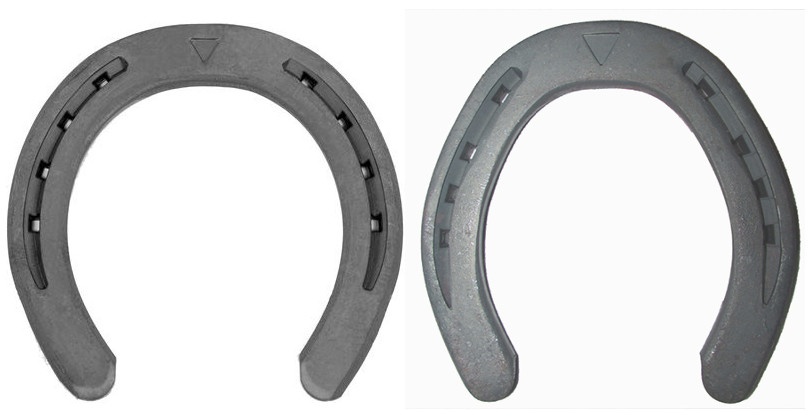
David Hodges, CJF
This successful, independent farrier with over 30 years of experience, talks about how the farrier business has changed and where it’s headed.
The bottom line is to do what’s best for the horse.
“I got tired of working for the other guy. I wanted to do something on my own,” says David Hodges on how he first knew he wanted to pursue being a farrier. Starting his schooling at North Texas Farrier School in 1987, “I started getting my name out there and then officially went full time in January 1989.” Since then, he’s “shod a lot of horses, met a lot of people, and learned a lot along the way.”

This business isn’t so much taught as it is caught.
“Nobody in their right mind would put their body through the punishment that we do… just because. But there is satisfaction in it.” Now he’s in a place in his career where he wants to give back to younger farriers. He has a few he’s currently mentoring. “Just them riding along with me puts them 5 years ahead of me when I started out. Where I was working fresh out of school, there just wasn’t a lot of opportunity for mentorship. I relied on SFA (Southern Farriers Association) clinics to continue my education.” Because of the value he received early in his career, David decided early to support the American Farriers Association (AFA).
Helping a new generation of farriers.
Hodges started volunteering his time with the SFA (which is Chapter 6 of the AFA) in the early 2000s serving as President, Vice President, Secretary, and also interim Treasurer. In addition, he’s also been involved in the AFA certification program.
“I’m not seeing a lot of younger guys that are sticking with it. For one thing, it’s hard work. Another is persistence. There’s no instant success. I think they're figuring they’ve been out of farrier school for a couple years, so why isn’t everybody just beating my door down to get me to come work for them? It doesn’t work like that. You don’t ride the elevator to success, you take the stairs.”
However, he says there will always be a place for a good farrier, especially one that has a desire to learn and hone their craft. “They will always stay busy. For the last 15 years or so, I stay as busy as I want to be. I turn more work away now than I ever have.”
When it comes to being a successful farrier, Hodges says it’s all about building relationships. Not just with the customers and owners, but also with other farriers. “It becomes a brotherhood.”

Forging is only half of the picture.
Hodges had a few things to say concerning forging contests. “I really like seeing these shoeing and forging contests, but that’s only half the picture. The other half of the picture is being able to apply the skill correctly to the horse to bring out the best in that horse’s athletic ability. And sometimes in the process of forging and all that, some of that gets lost.”
“I like to make shoes and I like to make modifications, but the bottom line is – and this is why I’m heavily with Mustad – I’m looking for products that I can modify in just a few minutes. Not start from scratch. That cuts my time in half to try to get this horse sound.”
Mustad makes it easier.
He makes special requests for Mustad gear, especially St Croix Forge and Delta products. Because of David Hodge’s unique location (Gulfport MS, covering Eastern Louisiana all the way to Pensacola, FL), Mustad’s Southeast rep, David York, is in touch and ready to help.
David loves the Delta Challenger TS8 shoes. In his experience, he says they are a stronger shoe, with a minimal divot, nail holes that don’t get wobbly, and more. "The wear-in is a lot better. They just hold up better. I’m able to get 1-2 more settings out of them than the competition.”

Final words of advice.
“Leave it better than you found it,” is the philosophy David Hodges lives by every day. “If I feel confident that I left it better than I found it, then I did what I was supposed to do.” He added that no problem a horse might have can be solved by a vet or a farrier in one day or one appointment.
“A lot of this takes time. For people. For horses. It takes time to heal. To get back to work. There’s no instant gratification in it.” That may dismay others, but Hodges finds strength in it. At the end of the day, he sums up his farrier experience quite simply. "The bottom line is to do what’s best for the horse. That’s why we’re here. It’s as simple as that.”